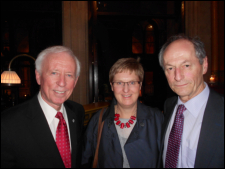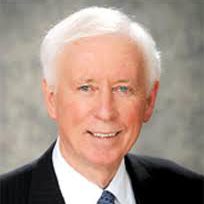Health Care Transformation in Canada
(20.03.13) I reported in a previous blog on the report from the University College of London (UCL), Institute of Health Equity (IHE) “Working for health Equity: The Role of Health Professionals”. The report was presented March 18 at BMA House in London. Professor Sir Michael Marmot, Director of the IHE led the program that focused on the role of health professionals in working to reduce health inequalities through action on the social determinants of health.
Dr. Anna Reid, President of the Canadian Medical Association (CMA), reported on a simultaneously released Canadian study titled “Physicians and health equity: Opportunities in Practice.

Dr. Reid, an emergency physician from Yellow Knife, Canada, pointed out the difficulties people face “….when social and economic conditions, the social determinants of health, prevent or constrain people from taking actions or making decisions that promote health. She emphasized the challenges of lack of access to care in remote, rural populations and especially among the First Peoples of Canada.
The report from the CMA highlights that many physicians are engaged in innovative practices to help address the needs of the most vulnerable, but there is limited published material on opportunities to address these issues. In recognition of this the CMA interviewed physicians from across the country with a hope to highlight work being done and provide strategies and tools to physicians to address health equity in their practices.
Following an interview protocol developed by CMA, interviews were conducted with 32 physicians from eight provinces and two territories in Canada. The physicians were drawn from family medicine, emergency medicine, pediatrics, psychiatry and public health.
Physicians were asked to identify common areas of intervention for addressing health equity within practice. The most common answers in descending order were:
- Linking patients with supportive community programs and services
- Asking questions about a patient’s social and economic circumstances
- Integrating considerations of social and economic conditions into treatment planning (i.e. cost of medications)
- Advocating for changes to support improvements in the social and economic circumstances of the community (i.e. advocating for reductions in child poverty)
- Undertaking advocacy on behalf of individual patients (i.e. letters about the need for safer housing)
- Adopting equitable practice design (i.e. flexible office hours, convenient practice location)
- Providing practical support to patients to access the federal and provincial/territorial programs for which they quality
Physicians identified barriers to this work. The most common were:
- Payment models
- Attitudes that lead to stigmatized environments and prevent public action
- Absence or lack of clinically-oriented information about the programs and services available for patients
- Ability to find the time necessary to address these issues within practice
- Lack of integration between health and community-based services
- Lack of knowledge and skills to undertake this type of work
- Practice design
- Lack of services and supports in the community (in particular in rural and remote communities)
- Lack of evidence and research on effective interventions for physicians
- Personal attitudes that include powerlessness in the face of patients’ social and economic barriers
Interviewers also highlighted facilitators. The most common were:
- Clinical training about how to do this type of work (i.e. service learning programs in medical school and residency)
- Interdisciplinary team-based practice settings
- A relationship with community services and programs
- Clinically relevant resources about the programs and services that were available for patients
- Supportive compensation models (i.e. salary, billing codes for complex patients)
- Continued research that demonstrates efficacy in the clinical environment
- Finding a like-minded community of practice
Participants suggested a key role for CMA and other national medical groups in advocating for health equity issues. They recommended actions in five main areas: clinical practice, education, compensation, research, and advocacy and communications.
My commendations go to the CMA and Dr. Reid for an excellent report; and to the physicians of Canada for their recognition of the importance of the medical profession addressing the social determinants of health to improve health equity for their patients.

